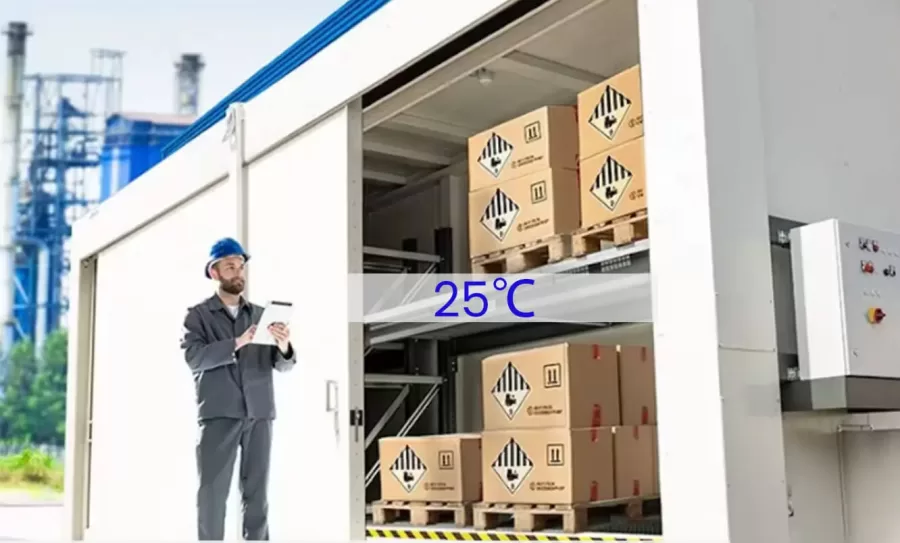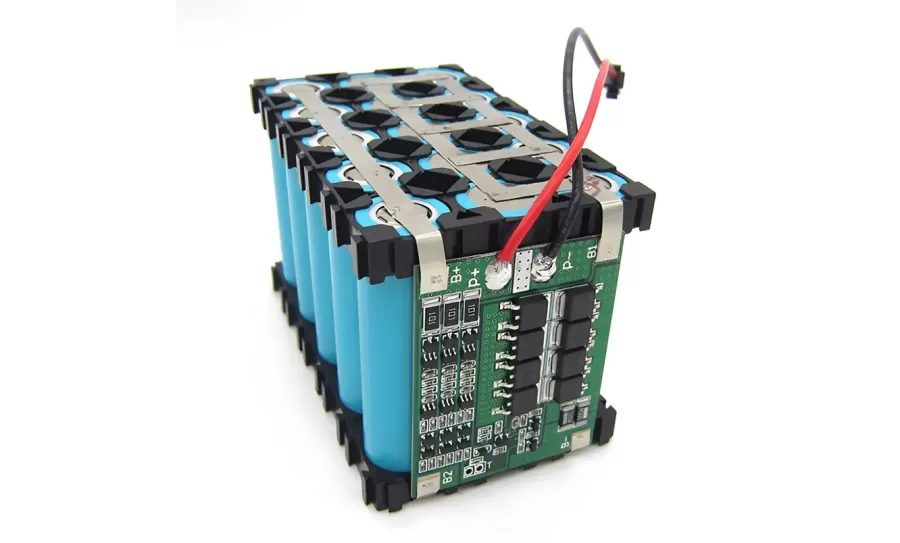An often underutilized aspect of caring for storing custom lithium ion battery packs. While it may seem simple enough to set your battery aside and forget it, many common practices can lead to reduced battery life or even dangerous outcomes like fires. However, if you follow these best practices, you should be able to extend your lithium-ion battery’s lifespan and ensure safe handling.
1. Storing Lithium Ion Batteries at The Right Temperature.
The typical lithium ion battery storage temperature range of a home or storage unit is usually storing lithium batteries safely. The range of safe storage temperatures is wide, as shown in the chart below.
| Storage time | Storage temperature range |
| 1 month | -20°C to 45 °C |
| 3 months | -20°C to 35 °C |
| 1 year | -20°C to 25 °C |
However, issues like decreased battery lifespan occur in extreme weather conditions. If you live in a very cold or very hot location, avoid li ion battery storage in an outdoor shed without taking the proper precautions like using extra insulation, a heating pad, or a cooling unit. These types of fluctuations in temperature cause the battery to expand and contract, which causes reduced battery capacity and potential damage.

2. Take Precautions for Long Term Storage.
Try not to store your lithium battery for too long without use. If long periods of storage are unavoidable, use an industrial thermometer and a warning system to monitor temperature and charge levels. Check your battery charge level periodically to ensure your battery is charged to the optimal level, which will help you avoid battery-damaging deep discharge.
Additionally, when storing your battery, make sure it is unplugged from the machine it powers. Even machines that are turned off still run a small current when plugged in, draining your battery to the point of complete discharge.
3. Adjust for Humidity.
The optimum humidity level for safe lithium ion battery storage is 50%. When the humidity is too low, the air dewdrop may cause the battery terminals to rust, leading to a short circuit or even a fire. To lower the humidity, you can use desiccants or store the battery in a package.
4. Store at An Optimal Charge Level.
When a lithium-ion battery is fully charged, it runs at a higher voltage, which puts stress on the battery and reduces overall lifespan. On the other hand, undercharging your battery before storage can lead to deep discharge which can cause severe damage. A lithium-ion battery discharges slower at an optimal partial charge, extending the battery’s lifespan. Aim to keep your battery between 40% and 50% while in storage.
5. Account for Self-consumption.
Your battery will naturally discharge when stored for a long time, known as self-consumption or self-discharge. When the battery is stored for a long time, the self-consumption rate is about 10-20% each year. When a lithium-ion battery pack comes equipped with a battery management system (BMS), it requires additional power, raising the self-consumption rate to about 20% annually.
Make sure to monitor this self-consumption to avoid deep discharge. Try using a state-of-charge (SoC) LED monitor to keep track of self-consumption, and recharge accordingly.
CMB Chief Technology Officer (CTO) has more than 15 years of experience in the lithium-ion battery industry, we can help customers better understand the storage and safe use of lithium batteries, click here for guidance on custom lithium ion battery packs.
In conclusion, proper storage of your lithium-ion battery is crucial to its longevity and safety. Regarding safe storage of lithium batteries regulations, we should follow these tips, you can extend your battery’s life and save money in the long run. Don’t forget to charge and discharge your battery every three months, and always monitor its temperature, humidity, and capacity.



